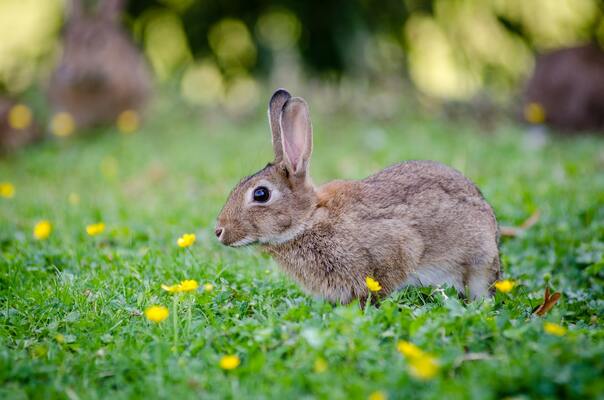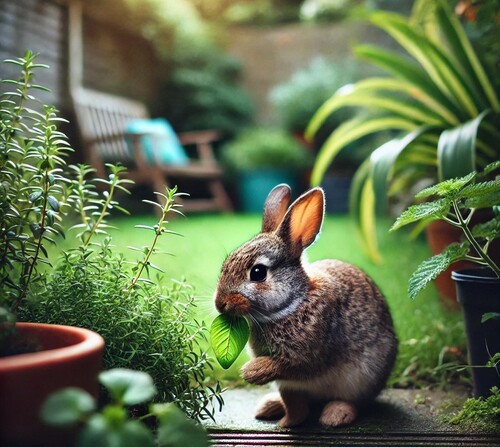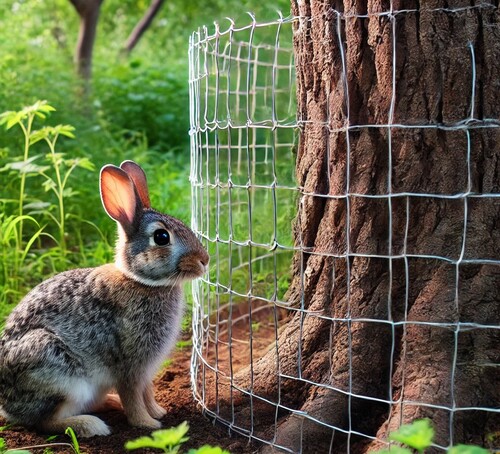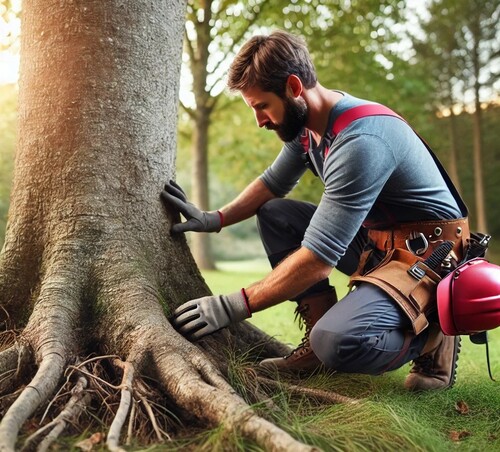Pest of the Month: Rabbits

Image by Flickr
Introduction
While rabbits may seem like harmless, fluffy creatures, they can pose a significant threat to your landscaping. This guide will explore the potential damage rabbits can cause to your trees and shrubs and provide effective strategies for prevention and recovery.
Understanding Rabbit Damage to Trees and Shrubs

A Wild Rabbit Enjoying a Backyard Snack Among the Greenery
Rabbits, both jackrabbits and cottontails, can inflict considerable damage on your vegetation, particularly during fall and winter months.
Types of Damage:
- Clipping of buds, bark, stems, and small branches
- Girdling of larger trees (complete removal of a circle of bark)
- Severe damage to young trees with thinner, smoother bark
Expert Insight: "Rabbit damage is often underestimated by homeowners. A single rabbit can destroy multiple young trees in one winter if left unchecked," warns Dr. Emily Johnson, an urban wildlife specialist.
Trees Most at Risk:
- Apple
- Bald Cypress
- Cherry
- Maple
- Plum
- Pine
Important Note: Evergreen trees cannot resprout from their base. If nipped off below their lowest branch, they will need complete replacement.
Preventive Measures: Keeping Rabbits at Bay

Wild Rabbit Kept Outside a Low Fence Protecting a Tree
Protecting your trees from rabbit damage is crucial, especially for young or valuable specimens. Here are several effective strategies:
1. Fencing
- Install a 2-foot-tall, 1-inch mesh fence made of galvanized poultry wire
- Secure the fence to the ground or bury it a few inches deep to prevent burrowing
2. Tree Protectors
Use commercial or DIY tree protectors made from various materials:
- Tin foil
- Plastic
- Paper
- Wire
Ensure protectors are 12-18 inches taller than expected snow levels
3. Habitat Modification
Remove potential rabbit habitats near trees:
- Weed patches
- Brush piles
- Debris piles
- Dense cover
Regularly mow and weed open areas around trees.
4. Rabbit Removal
- Consider humane trapping methods
- Consult local regulations regarding hunting or relocation of rabbits
Pro Tip: "Combining multiple prevention methods, such as fencing and habitat modification, creates a more robust defense against rabbit damage," advises landscaper Mark Thompson.
Recovery Strategies: Helping Damaged Plants Bounce Back
If rabbits have already caused damage to your trees and shrubs, prompt action can help with recovery.
For Shrubs:
- Apply rabbit repellents to prevent further damage
- Prune damaged stems down to fresh bark
- Check for healthy bark under chewed areas
- Be patient and monitor for new growth
For Trees:
- Assess the extent of damage around the tree's circumference
- Trees with damage to less than 25 percent of the circumference have a higher chance of survival
- Consider professional assessment for severely damaged trees
- Remove trees unlikely to survive to prevent potential hazards
Expert Advice: "Early intervention is key. If you suspect rabbit damage, don't wait to take action. The sooner you address the issue, the better the chances of recovery," emphasizes certified arborist Sarah Lee.
The Role of Professional Tree Care

A Professional Arborist Examining the Base of a Tree for Damage
While many preventive measures can be implemented by homeowners, professional arborists offer valuable services:
- Expert damage assessment
- Specialized treatments for damaged trees
- Customized prevention strategies
- Proper pruning and care to promote recovery
FAQs About Rabbit Damage to Trees
1. Q: How can I tell if damage is from rabbits or other pests?
A: Rabbit damage typically shows clean, angled cuts and occurs close to the ground. Look for rabbit droppings nearby as additional evidence.
2. Q: Are there any natural repellents for rabbits?
A: Yes, some gardeners have success with blood meal, hot pepper spray, or predator urine. However, these may need frequent reapplication.
3. Q: Can a tree recover from complete girdling?
A: Complete girdling is often fatal for trees. In some cases, bridge grafting performed by a professional arborist may save the tree.
Conclusion: Protecting Your Landscape from Rabbit Damage
While rabbits can pose a significant threat to your trees and shrubs, with the right knowledge and preventative measures, you can protect your landscape. Remember, early detection and prompt action are key to minimizing damage and promoting recovery.
By implementing a combination of physical barriers, habitat modification, and vigilant monitoring, you can create a landscape that's both beautiful and resilient to rabbit damage.
Need expert help with rabbit deterrents or tree recovery? Contact Arborist Now today for professional guidance and services tailored to your landscape's needs!
Originally posted on March 19, 2020.





